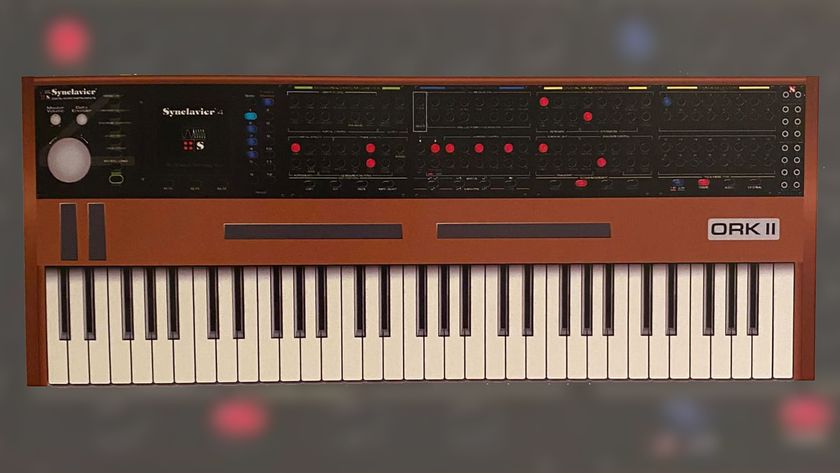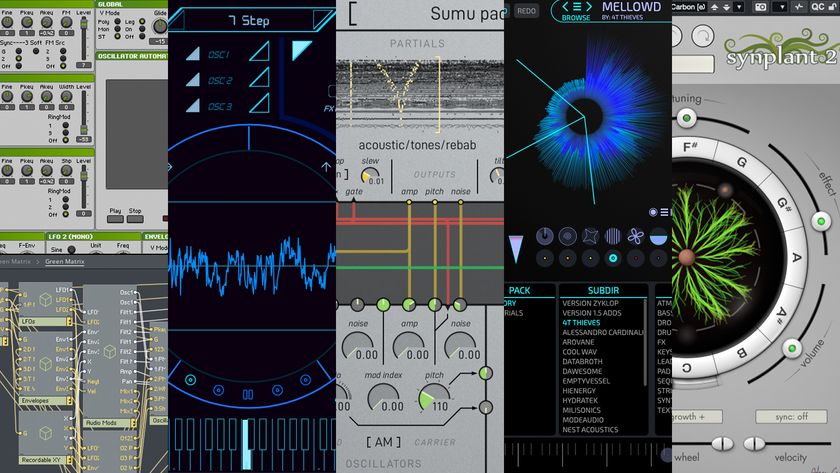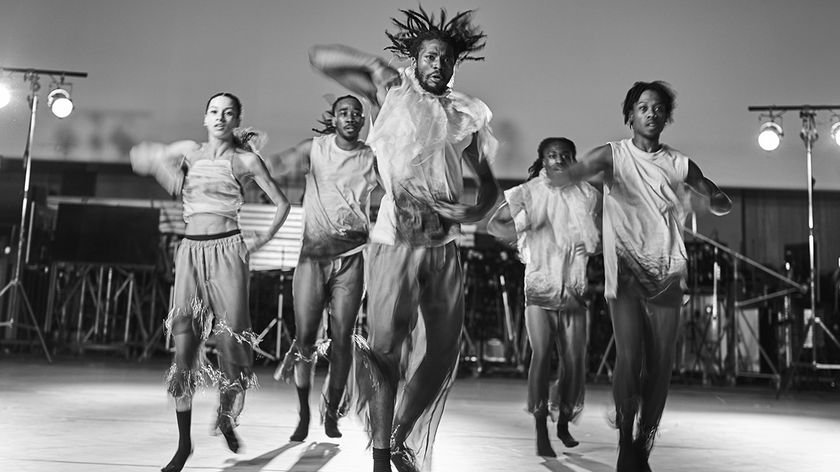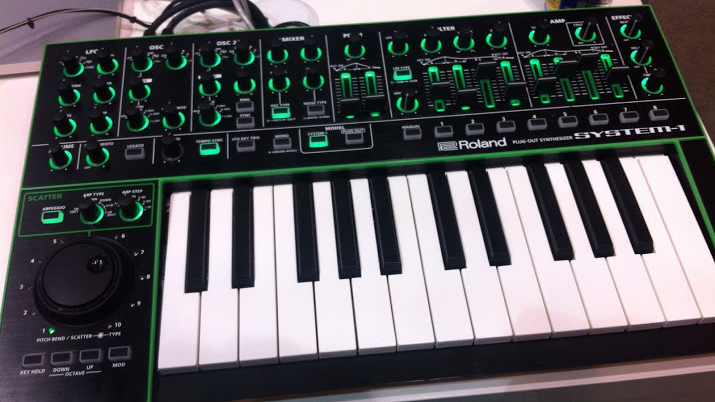
MUSIKMESSE 2014: For the most part, the instruments in Roland's much hyped Aira range are no longer the enigmas they once where. Following the extensive teaser campaign, full details have now been released to the public, and we've already had a chance to test the TR-8 drum machine, TB-3 bass synth and VT-3 vocal transformer.
There is one Aira product that still remains somewhat in the shadows, however: the System-1 'plug-out' synth, which will be the last of the four initial Aira instruments to be released when it arrives this summer. While we've already seen pictures of the instrument and heard about its ability to load in classic synth sounds via USB, Frankfurt 2014 offered our first chance to get properly hands-on with the synth and see how it actually sounds.
System-1 unplugged
Until recently, most of the information Roland has made available about the System-1 has focussed on, what they call, its 'plug-out' capabilities, which allow the instrument to import digital synth emulations from a computer via USB, to supplement its own built-in synth engine. Details of the synth's own sound engine have been somewhat scarce, however, with little information available about the specific capabilities of the instrument itself. While we'll have to wait for a full review - and more specifically, for Roland to release some 'plug-outs' - to get a full picture of the System-1's capabilities, Musikmesse did at least give us a chance to test out the built-in side of the instrument.
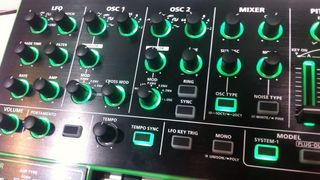
So what capabilities does the System-1 pack straight out the box? Essentially, the instrument is built around a two oscillator digital synth engine, with an additional sub oscillator and white/pink noise generator. The two main oscillators each offer a choice of six waveshapes, along with Color dials which can be used to create continuously evolving waveshapes. There's also Ring Modulation, Cross Modulation and Oscillator Sync buttons.
Additionally, the System-1 features an LFO, along with separate filter and amp ADSR envelopes, and an AD pitch envelope. There's also a button for switching between Mono, Unison and Poly modes, a flexible looking arpeggiator and a the same Scatter rhythmic effect dial that features on the rest of the Aira range. Finally, onboard reverb, delay and bitcrusher effects round things off.
First impressions
Evidently, the System-1 is actually, given its price, an impressively fully featured synth in itself. In the brief amount of time we had to test the instrument on the show floor, our impressions of its inbuilt sounds were positive. We've not had enough time with it to establish how close its tones are to the System 100 or System 700 it takes inspiration from, but it certainly comes across as flexible and capable of recreating plenty of classic synth sounds.
In terms of build quality the System-1 feels as sturdy as its Aira counterparts. The keyboard is a little shallow, but feels playable enough. The fact that the built-in sound engine features a control per function, with no need for shift keys, is great for its credentials as a performance instrument.
Get the MusicRadar Newsletter
Want all the hottest music and gear news, reviews, deals, features and more, direct to your inbox? Sign up here.
We'll have to wait and see how well the 'plug-out' functionality is implemented, and how well it integrates with the hardware itself. It will be interesting to see, for example, how the upcoming SH-101 emulation fits with the slightly mismatched control surface offered by the hardware. Every control on the System-1 is backlit, so we'd assume that in 'plug-out' mode some unavailable parameters may dimmed, but it will be interesting to see how well Roland integrate an emulation of the SH-101's slider-controlled VCO section with the System-1's dial-operated oscillators.
On the whole, however, our initial impression of the System-1 is one of tentative excitement. We're certainly looking forward to the chance to get hold of one for a full review and dig a little deeper into its capabilities.
I'm the Managing Editor of Music Technology at MusicRadar and former Editor-in-Chief of Future Music, Computer Music and Electronic Musician. I've been messing around with music tech in various forms for over two decades. I've also spent the last 10 years forgetting how to play guitar. Find me in the chillout room at raves complaining that it's past my bedtime.
